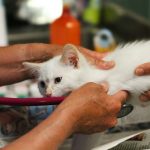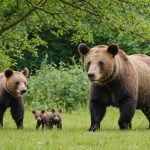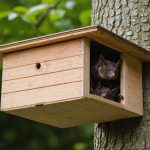You probably have interacted with animals in one way or another. They are a part of our lives in various capacities, from pets and livestock to the diverse wildlife species that inhabit our landscapes. With such interactions, especially between domestic and wild animals, there arises a risk, the risk of diseases transmission. This risk necessitates robust surveillance systems to monitor and address the spread of diseases, especially from domestic to wild animals.
The UK has established mechanisms to handle this challenge. From Google Scholar and PubMed articles to CrossRef reports, renowned health and wildlife scholars like Gortazar have consistently highlighted the importance of such systems. They argue that these mechanisms contribute significantly to human health by preventing potential epidemics.
En parallèle : Supporting Your Flat-Coated Retriever Through the Grief of Losing a Companion Pet: Effective Strategies for Healing
Understanding the Nature of Diseases Transmission from Domestic to Wild Animals
Before delving into how the UK addresses this issue, let’s comprehend the nature of these diseases and their transmission. In broad terms, diseases can jump from domestic to wild animals, posing a significant threat to wildlife species.
These overlaps of domestic and wild animals’ habitats increase the possibility of diseases spreading. The diseases in question can be bacterial, viral, fungal, or parasitic infections. Some classic examples include Avian Influenza, Rabies, and Tuberculosis.
A voir aussi : Essential Ways to Safeguard Urban Wildlife Habitats in the UK
It’s crucial to understand that this transmission is a two-way street. Not only can domestic animals transmit diseases to their wild counterparts, but wild animals can also be a source of diseases for livestock and pets. This dynamic necessitates a comprehensive approach to wildlife disease surveillance that addresses both sides of the coin.
Monitoring Systems Put in Place
To effectively manage the risk of diseases transmission, the UK has put in place extensive monitoring systems. These systems involve regular and systematic collection, analysis, and interpretation of health data. They are necessary for planning, implementing, and evaluating public health practice.
The surveillance process is often initiated based on reports from farmers, veterinarians, and wildlife enthusiasts who notice an unusual number of sick or dead animals. In some instances, surveillance is part of routine health checks by veterinary officers or part of targeted research projects.
The data collected from these sources are then entered into national databases, which are critical for identifying patterns, trends, and risk factors for various diseases. This information subsequently informs the development of mitigation strategies.
Role of Government Agencies and Research Institutions
The UK government, through various agencies, plays a pivotal role in this surveillance process. The Animal and Plant Health Agency (APHA), for instance, is instrumental in monitoring wildlife diseases. It collaborates with other organisations such as the British Trust for Ornithology and the Zoological Society of London in data collection and analysis.
Renowned research institutions and universities also significantly contribute to monitoring efforts. They conduct research, which often involves tracking and studying specific wildlife species or disease issues. The findings from these studies are essential in shaping public health policies and strategies.
The Use of Advanced Technology
The advent of advanced technology has immensely improved the surveillance of wildlife diseases in the UK. Remote sensing, for instance, is increasingly being utilised to detect changes in wildlife populations, which can indicate disease outbreaks.
Moreover, molecular techniques are used to identify and characterise pathogens, which enhances our understanding of their transmission dynamics. This information is crucial in developing effective control measures against these diseases.
Digital technologies also play a significant part in these efforts. Online databases and digital maps, for instance, allow real-time tracking of disease outbreaks. They also facilitate rapid sharing of information among relevant stakeholders, thus enhancing the response to disease outbreaks.
Mitigation Measures
Once a disease outbreak is detected, immediate and appropriate measures are put in place to control its spread. These include quarantine of affected areas, vaccination of susceptible animals, and in some cases, culling of affected animals.
Public awareness campaigns are also crucial in these efforts. They ensure that the public is adequately informed about the risks involved and the appropriate measures to take.
In conclusion, the UK has made significant strides in monitoring and addressing the transmission of diseases from domestic to wild animals. This has been made possible through robust surveillance systems, the involvement of government agencies and research institutions, the use of advanced technology, and effective mitigation measures. Nonetheless, as the adage goes, there is always room for improvement. Therefore, it’s imperative to continually improve these systems to ensure that they remain effective in the face of evolving disease threats.
Advanced Research and Findings
In the age of technology, advanced research methods and findings have also played a significant role in monitoring and addressing the spread of diseases from domestic to wild animals. Numerous findings, available on Google Scholar and PubMed Google, have provided valuable insights into this issue.
One of the most significant breakthroughs in the field is the discovery of the transmission of African swine fever from domestic pigs to wild boar. This discovery has helped researchers to better understand the mechanisms of disease transmission and develop effective intervention strategies.
The importance of wildlife trade in disease transmission has also been highlighted in recent research. The trade, especially illegal, increases the interface between domestic and wild animals, thereby facilitating disease transmission. This has led to calls for stricter regulation of wildlife trade and improved biosecurity measures.
The role of environmental factors in disease transmission has also been studied extensively. Changes in land use, for instance, have been found to influence wildlife-livestock interactions and consequently the transmission of diseases. This has underscored the need for integrated land management strategies that take into account animal health and disease surveillance.
Future Directions and Conclusion
Despite significant advancements in the monitoring and control of diseases transmission from domestic to wild animals in the UK, there are several areas that warrant further attention. First, there is a need for more research on infectious diseases dynamics and their impacts on wildlife populations. This can be facilitated by increased funding for research institutions and agencies like Ryser Degiorgis and Ruiz Fons that are at the forefront of wildlife health research.
Second, there is a need to strengthen public health capacity. This entails improving disease surveillance systems, enhancing laboratory capacity, and expanding the workforce. This would ensure that the UK is better prepared to deal with potential disease outbreaks and their impacts on public health.
Third, there is a need for stronger collaboration between different stakeholders involved in animal health. This includes government agencies, research institutions, farmers, and veterinarians. Such collaboration would enhance information sharing and coordination, thereby improving the effectiveness of disease control measures.
Lastly, there is a need for greater public awareness and education on issues related to wildlife diseases. This would empower the public to play an active role in disease prevention and control.
In conclusion, the UK has made commendable progress in monitoring and addressing the transmission of diseases from domestic to wild animals. This has been made possible through robust surveillance systems, advanced research, and effective mitigation measures. However, as the risk of disease transmission continues to evolve, it’s important to continuously improve these systems and measures. This calls for more research, stronger public health capacity, better collaboration among stakeholders, and greater public awareness. With these efforts, the UK can effectively protect its wildlife and public health from the risks associated with wildlife diseases.
















